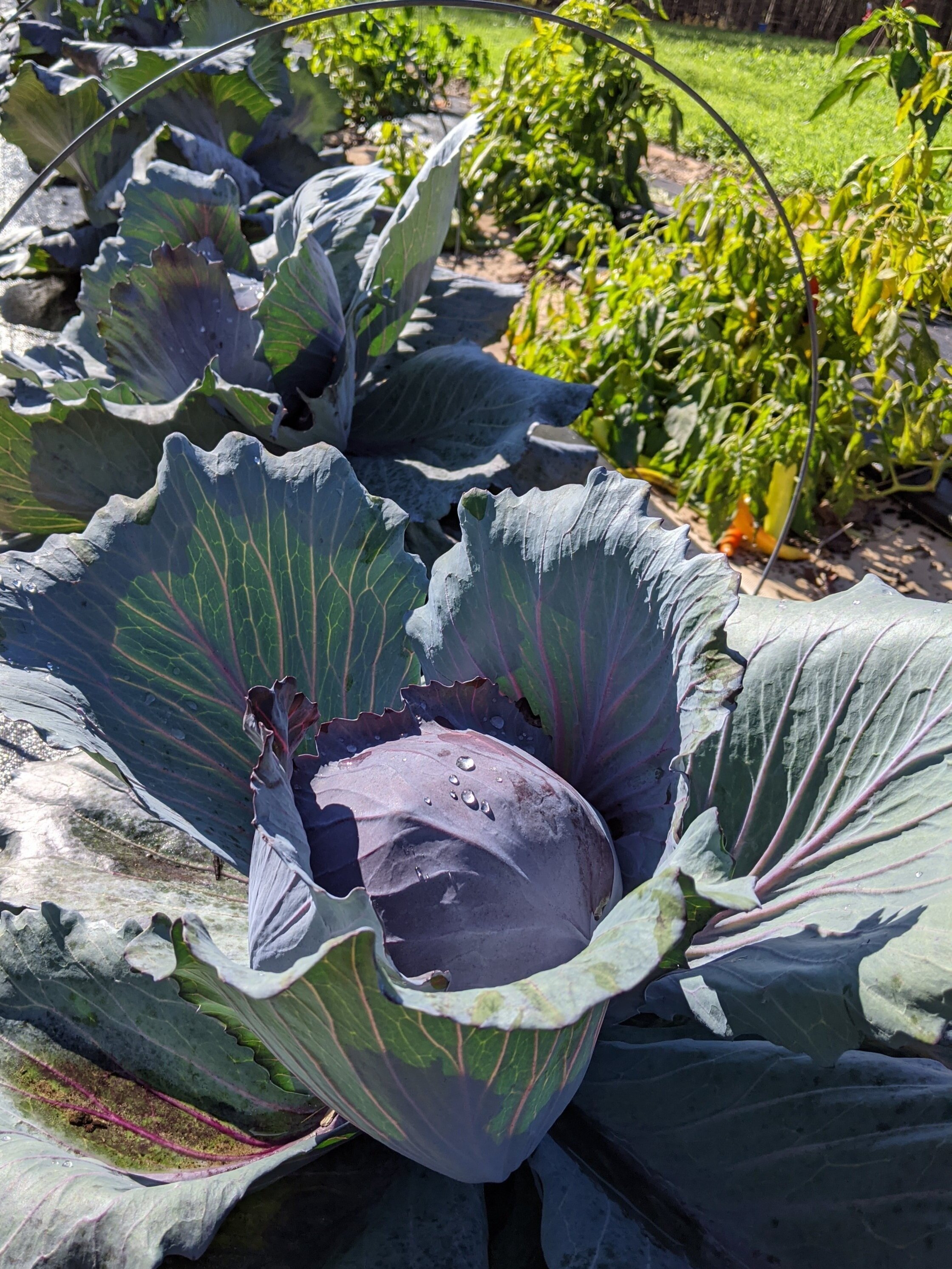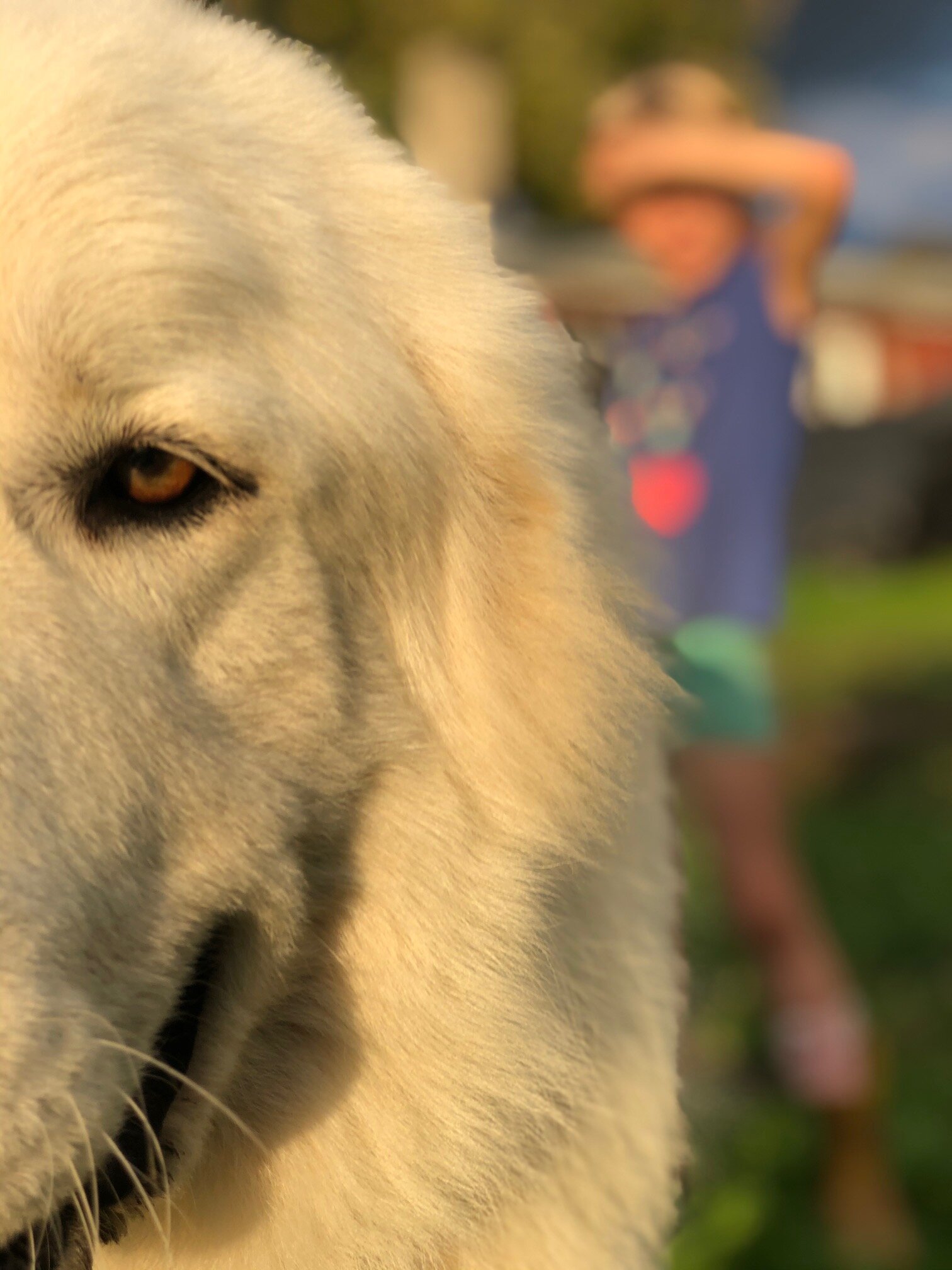DISCLOSURE: THIS POST MAY CONTAIN AFFILIATE LINKS, WHICH MEANS I MAY EARN A COMMISSION IF YOU CLICK A LINK AND MAKE A PURCHASE. FEEL FREE TO CHECK OUT MY DISCLOSURE POLICY FOR MORE DETAILS.
The Long Version
So I’m out in the field, right? Checking on the pigs and chickens, refilling their water and food, talking to them about the facts of life and such. Meanwhile, Liv and Coll are running around in the field with Samson, our gentle Great Pyrenees puppy.
As I’m topping off the chicken waterer, Roosty starts attacking me, neck feathers raised like he stands a chance with a grown adult human. (This behavior used to scare me. I would scream and run away when he charged. Now I stand my ground and engage in battle with an eight-pound bird. As you can imagine, winning doesn’t feel great, but it’s not like I’m picking the fight with him.) Anyway, I kick the rooster off me for the fourth or fifth time (He’s relentless some days.) when I hear Coll screaming. I of course rush over to him. He’s upright and intact, but he’s rubbing his eyes. I pick him up, assuming the overly friendly dog got all up in his personal space, and Coll just needs a break from him.
The chores aren’t done yet, so Liv, Coll, and I walk over the the other chicken coop, where the pullets are, so we can check on them, and Coll is still carrying on about his eyes. This is when I realize Samson did more than annoy my boy. His eyelids are starting to swell.
The three of us go inside the house, Coll rubbing his eyes and crying the whole time. I wash his face and hands, give him a dose of Zyrtec, lay him down to flush his eyes out with eye drops, and put a cold compress on his eyes. His eyelids are growing more swollen by the minute, and I have the good sense to take a picture for comparison’s sake.
I breathe. The boy wants goldfishies, so Liv gives him goldfishies. He wants kombucha, so I give him some kombucha. We sit and watch his eyes. The skin around his eyes is getting puffier and turning a shade of lavender. I’m trying to pretend I’m not freaking out, but at this point I am. How swollen can a toddler’s eyelids get before they burst? What are the rules for this? I call the pediatrician. They tell me if he’s breathing normally, then there’s no need to administer his epipen, but they still want to see us. I make the appointment.
I scramble to figure out what to do with Olivia while I take Coll to the doctor’s office. Aaron was busy at work, which is 45 minutes away from our house, and none of the nearby grandparents are available. (For posterity’s sake, I should mention we’re in the midst of Covid-19 restrictions, so bringing extra people to a doctor’s office is frowned upon.) I call and explain my predicament to the pediatrician’s receptionist, who says it’s cool if I bring a spare kid as long as everybody’s wearing masks. I say a confident,“Okay,” but I’m thinking, “Have you ever tried to keep face masks on children?”
Long story longer, the doctor meets with us and tells me Coll’s lungs are clear. (Win!) She tells me to keep an eye on his breathing, to prop him up when he sleeps, and to check in with his allergist. Oh, and I gave him the wrong meds. (Fail…)
Six hours later, his puffy eyes make him unrecognizable, but he’s giggling and running around in the yard (away from the blasted dog) with his sister. All is well.



















